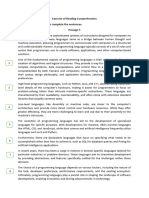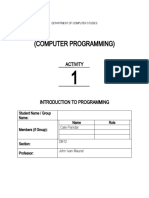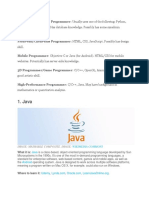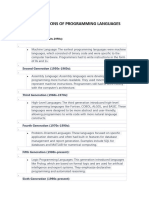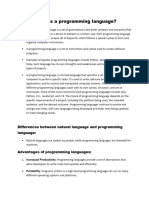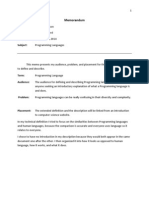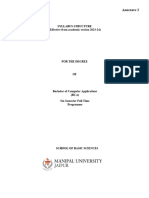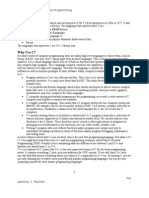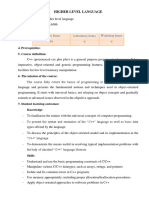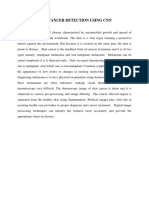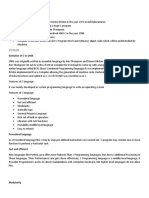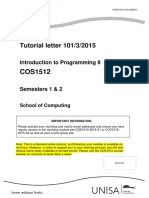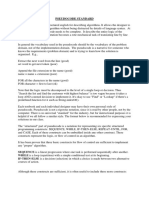0% found this document useful (0 votes)
26 views2 pagesProgramming Languages Are Classified Based On Their Level
Programming languages are categorized into low-level and high-level languages, with subcategories including procedural, object-oriented, scripting, functional, and logic-based languages. Additionally, there are database query languages like SQL, markup and styling languages such as HTML and CSS, and specialized languages for specific applications. Each type serves distinct purposes and is designed to meet various programming needs.
Uploaded by
mjcsubido30Copyright
© © All Rights Reserved
We take content rights seriously. If you suspect this is your content, claim it here.
Available Formats
Download as PDF, TXT or read online on Scribd
0% found this document useful (0 votes)
26 views2 pagesProgramming Languages Are Classified Based On Their Level
Programming languages are categorized into low-level and high-level languages, with subcategories including procedural, object-oriented, scripting, functional, and logic-based languages. Additionally, there are database query languages like SQL, markup and styling languages such as HTML and CSS, and specialized languages for specific applications. Each type serves distinct purposes and is designed to meet various programming needs.
Uploaded by
mjcsubido30Copyright
© © All Rights Reserved
We take content rights seriously. If you suspect this is your content, claim it here.
Available Formats
Download as PDF, TXT or read online on Scribd
/ 2






























